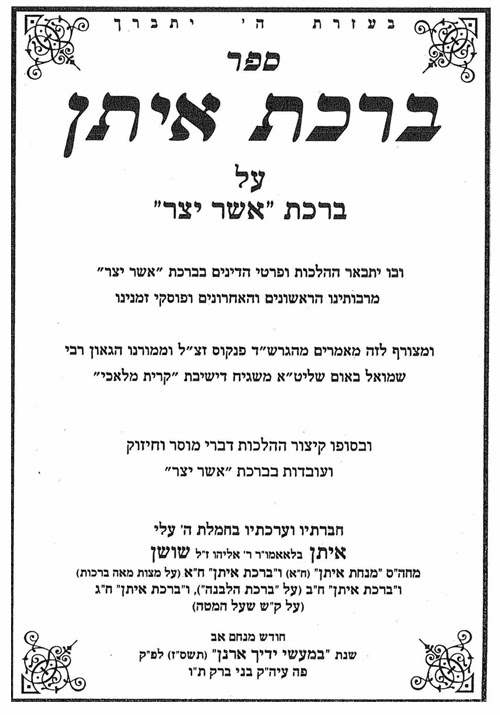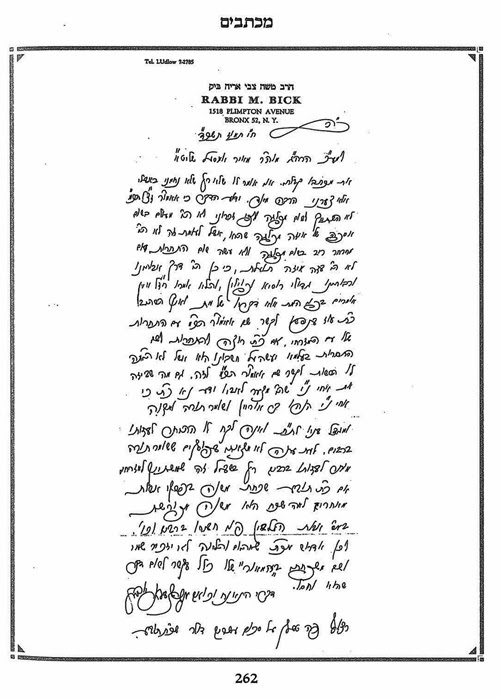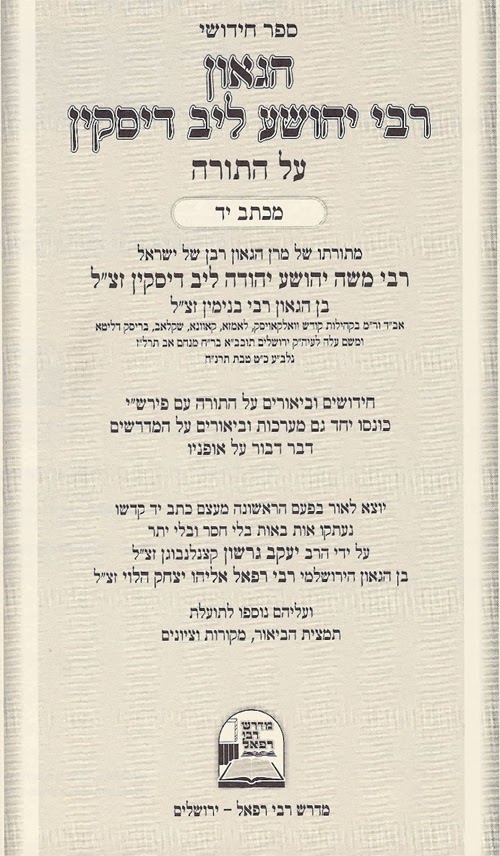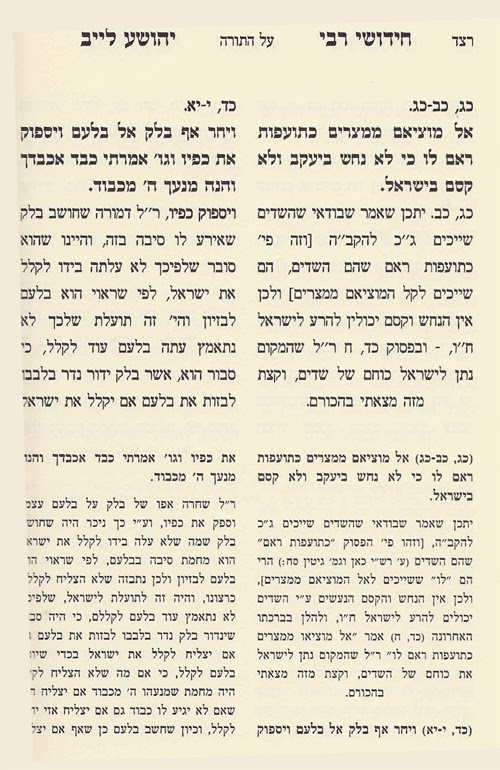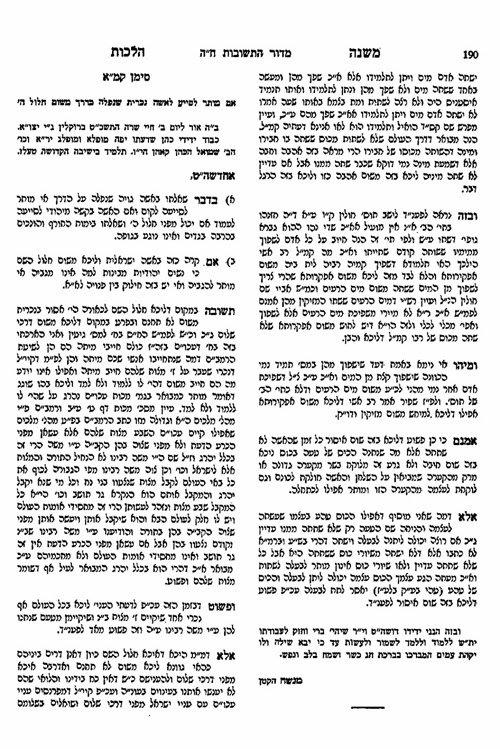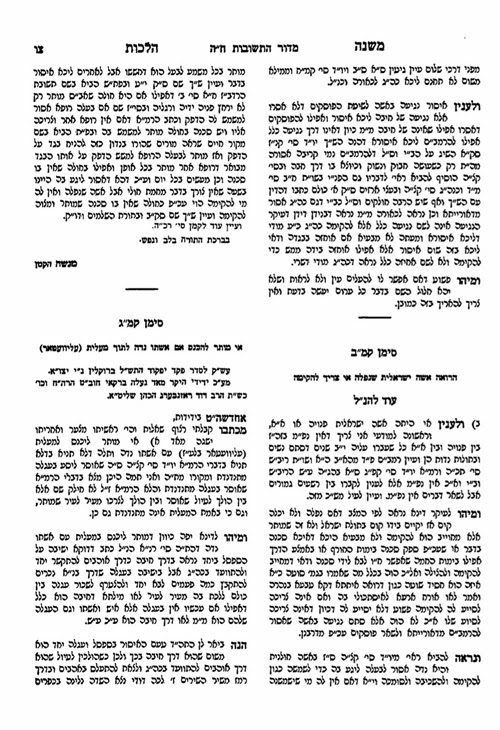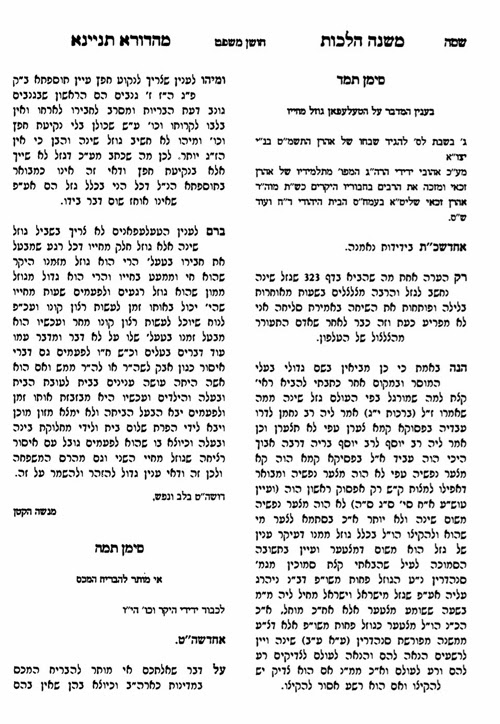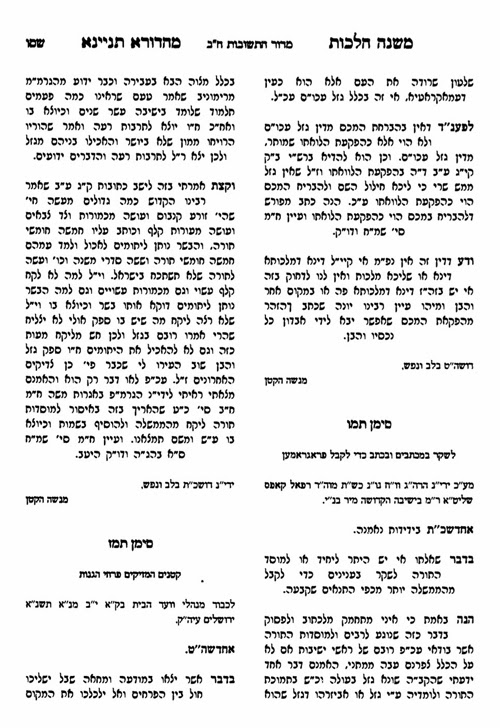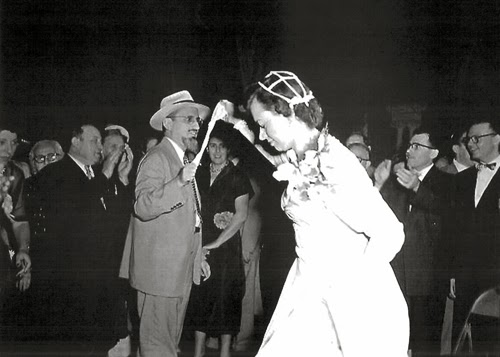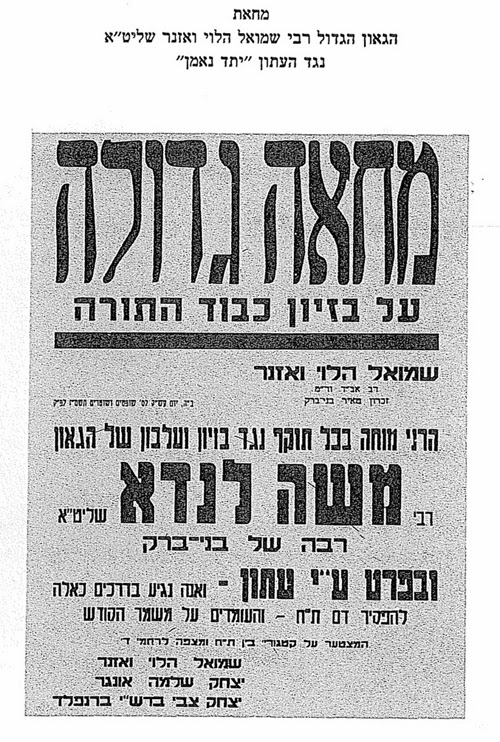What Orthodoxy Can Gain From Academic Biblical Studies: The Torah as Political Theory[1]
by: Joshua Berman
In ways that were astonishingly new and counter-intuitive, in ways that served the purposes of no known interest group, the political philosophy of the Torah may be seen to rise like a phoenix out of the intellectual landscape of the ancient Near East. Throughout the ancient world the truth was self-evident: all men were
not created equal. It is in the five books of the Torah that we find the birthplace of egalitarian thought. When seen against the backdrop of ancient norms, the social blueprint found in the Torah represents a series of quantum leaps in a sophisticated and interconnected matrix of theology, politics and economics.
To appreciate the claim that the Torah represents the dawn of egalitarian thought, let us set the claim in historical perspective. It is only in the European revolutions of the 18th and 19th centuries that the privileges of rank and nobility are rejected, and the entrenched caste, feudal, and slave systems delegitimated. Greece and Rome had known their respective reformers, yet nowhere in the classical world is there evidence of a struggle to do away with class distinctions.
[2] None of the ancient authors championed egalitarianism in their ideal systems. “From the hour of their birth,” wrote Aristotle, “some are marked out for subjection, others for rule.”
[3] It was assumed that some would be rich and that many, many more would be poor. Not simply because that’s the way things were, but because that was the way things were actually supposed to be. For Aristotle, justice meant that equals be treated as equals and unequals as unequals.
[4] The Greeks and Romans possessed an overwhelming belief in the harmony of various classes. The medieval mindset, too, believed that in an ordered society each socioeconomic class performed its tasks for the common good.
[5] Political theorists from classical times through the Italian Renaissance, assumed that independence and freedom could not be achieved by those who did not already possess it.
[6] Social stratification was likewise the norm in the empires and lands of the ancient Near East. Not a culture in the region believed in the ideal of a society without entrenched class divisions that were founded on the control of economic, military, and political power.
To be sure, the Torah manifestly speaks of multiple classes of individuals within the Israelite polity, an order which may not be termed egalitarian in the full sense of the word. The Torah speaks of those with entitlements and privileges, such as the king, priests and Levites.
[7] But the control of economic and political resources enjoyed by these groups is greatly attenuated in contrast to the surrounding cultures of the ancient Near East. Most significantly, the Torah rejects the divide between a class of tribute imposers, which controls economic, and political power and an even larger class of tribute bearers. In its place, the Torah articulates a new social, political, and religious order, the first to be founded upon egalitarian ideals and the notion of a society whose core is a single, uniformly empowered, homogeneous class.
* * *
The revolution of political thought in the Torah begins with a revamping of theology: for people to think anew about
politics, they would first have to think anew about
theology. Our view of things political as distinct from things religious is a thoroughly modern notion: not a single culture in the ancient Near East has a word for “religion” as distinct from “state”. The Tanakh reflects a world in which theological beliefs were intimately bound up with the politics of the times and the support of social hierarchy.
To appreciate just how intimately politics and theology went hand in hand in the ancient world, imagine that we are archeologists digging up an ancient culture called “America.” Deciphering its religious texts, we discover that the paramount god of the pantheon was “Commander in Chief,” who resided in a heavenly palace, or temple called “White House,” and would traverse the heavens in his vehicle, Chariot One. We further discover that Commander in Chief had a consort known as “First Lady”—herself a goddess of apparently meager powers, yet assumed by some to possess a keen aesthetic sense. Our digging would further reveal that opposite “White House” in the heavens, was another temple, this one domed and populated by 535 lesser, regional deities, who routinely schemed and coalesced into partisan groupings, and who were known, on occasion, to have been able to depose Commander in Chief.
Put differently, what we would discover is that the institutional order “down below” is parallel to the divine order “up above.” This phenomenon, whereby the political structure of the heavens mirrored that of the earthly realm, was nearly ubiquitous in the ancient world, and it is easy to see why. Political regimes are, by definition, artificial, constructed, and therefore tenuous: there is no real reason why one person should reign, and not another. A regime can receive immeasurable legitimation, however, if the masses underfoot believe that it is rooted in ultimate reality and unchanging truth; that the significance of the political order has cosmic and sacred basis. The heavenly order mirrors the earthly order because ancient religion is a mask that covers over the human construction and exercise of power.
[8] For example, we find that the chief god of the Mesopotamian pantheon, Enlil, utterly resembles his earthly counterpart, the king. Enlil, like the king, rules by delegating responsibilities to lesser dignitaries and functionaries. Like his earthly counterpart, he presides over a large assembly. He resides in a palace with his wives, children, and extended “house.”
[9] Generally speaking, the gods struggled to achieve a carefree existence and enjoyed large banquets in their honor. Like kings, gods needed a palace, or what we would call a temple, where they, too, could reside in splendor in separation from the masses, with subjects caring for their every physical need.
If a god wanted something, say a temple repaired, or the borders expanded, he communicated through various agents with the king, and the king was his focus.
[10] The gods never spoke to the masses, nor imparted instruction to them. Ancient creation myths depict the masses serving a single purpose: to toil and offer tribute. Common humans were servants, at the lowest rung of the metaphysical hierarchy. The gods were interested in the masses to the extent that a baron or feudal lord would have interest in ensuring the well-being of the serfs that run the estate and supply its needs.
[11] Servants, no doubt, play a vital role in sustaining monarchical order, but from an existential perspective, it is a decidedly diminished and undignified role.
The Torah achieves a dual accomplishment as it reconfigures theology in a way that supports an egalitarian agenda: it articulates a portrait of the heavens that strips earthly hierarchies of power of their sacral legitimation. Moreover, it provides a theological grounding for the existence of a homogeneous nation of equal citizens.
This is achieved through the Exodus and the revelation at Sinai – stories that would have made a distinct and unusual impression on the ancient mind. The ancients had no problem believing that the gods could split the seas, or descend in fire upon a mountaintop. Yet the Exodus and Sinai stories required an enormous stretch of the imagination, as they required listeners of subsequent generations to believe in
political events that were without precedent and utterly improbable, even in mythic terms. Slaves had never been known to overthrow their masters. Gods had never been known to speak to an entire people. In propagating the story of an enslaved people simply upping and outing, however, the Torah also pre-empted claims of election and immanent hierarchy
within the Israelite nation. The Exodus story effectively disallowed any Israelite to lay claim to elevated status. All Israelites emanate from the Exodus—a common, seminal, liberating, but most importantly
equalizing event.
Although the revelation at Sinai is usually conceived in religious terms, its political implications are no less dramatic, and constitute the bedrock of the egalitarian theology the Torah sought to adduce. Elsewhere, the gods communicated only to the kings, and had no interest in the masses. But at Sinai, God spoke only to the masses, without delineating any role whatever for kings, and their attendant hierarchies.
[12] Archeological findings allow us to grasp the way in which the Sinai narrative transforms the masses into kings.
Here’s how it works: As scholars noted more than fifty years ago, the pact, or covenant between God and Israel displays many common elements with what are known in biblical studies as ancient Near Eastern vassal treaties between a great king and a weaker one. In these treaties the more powerful king acts on behalf of a weaker, neighboring king: sensing an opportunity to foster a loyal ally, he may send food during a famine, or soldiers to break a siege. In return, the lesser king demonstrates his appreciation to the powerful one by agreeing to a series of steps that express his gratitude and loyalty. In these treaties the vassal king retains his autonomy and is treated like royalty when he visits the palace of the powerful king. Having been saved from Egypt by God, the Israelites sign on at Sinai to a vassal treaty as sign of loyalty, becoming subordinate partners to the sovereign king, God.
The theological breakthrough of the Hebrew Torah the transformation of the status and standing of the masses, of the common person, to a new height, and the elimination of nobles, royalty, and the like. In the Torah, the common man received an upgrade from king’s servant to servant king.
[13] The ennoblement of the common man is manifested in the very notion that the accounts of Exodus and Sinai should be
promulgated among the people as their
history. The point requires a note of context for us as moderns. Although there are over one million inscriptions in our possession from the ancient Near East, there is nowhere evidence of a national narrative that a people tells itself about its collective, national life, of moments of achievement or of despair that is recorded for posterity.
Stories abound in the ancient Near East—but they revolve around the exploits of individual gods, kings and nobles.
[14] The stories were written, oddly enough, for the gods themselves—as witnessed by the fact that these texts were often discovered in temple libraries, buried, or in other inaccessible locations. Myths were recited to remind the gods of their responsibilities. Texts that detail a king’s achievements on the battlefield were read as a report to a deity about the king’s activities on his or her behalf. They were not composed for the masses.
In an age and place such as our own, where literacy is nearly ubiquitous, access to texts of many kinds and the knowledge they bear is unfettered and, in theory, available to all. But in the ancient world physical access to written texts and the skills necessary to read them were everywhere highly restricted. The production and use of texts in the cultures of the ancient Near East as well as of ancient Greece were inextricably bound up with the formation of class distinctions: those who could read and write were members of a trained scribal class who worked in the service of the king.
[15] Writing originated in the ancient Near East as a component of bureaucratic activity. Systems of writing were essential for the administration of large states. The elite in these cultures had a vested interest in the status quo, and had an interest in preventing others from gaining control of an important means of communication. Far from being interested in its simplification, scribes often chose to proliferate signs and values. Both cuneiform writing in Mesopotamia and hieroglyphics in Egypt are systems of writing whose signs and symbols run into the hundreds. The texts produced in Mesopotamia were composed exclusively by scribes and exclusively for scribal use—administrative or cultic, or in the training of yet other scribes.
The Cambridge anthropologist Jack Goody noted that a culture’s willingness to disseminate its religious literature inevitably reflects an emphasis on the individual within that culture.
[16] The comment sheds light on the Torah’s agenda to establish an ennobled egalitarian citizenry, as the Torah eagerly looks to share the divine word with the people of Israel. Moses reads the divine word to the people at Sinai (Exodus 24:1-8). Periodically, the people are to gather at the temple and hear public readings of the Torah (Deuteronomy 31:10-13). It is telling that the Tanakh never depicts priests or scribes as jealous or protective of their writing skills, as was common in neighboring cultures.
[17] * * *
Turning from theology, we see that the Torah radically revamped regnant notions of political office and the exercise of power, with an egalitarian agenda. The Torah is the first work in history to adopt the rule of law. The great 20th century political philosopher, Friedrich Hayek, saw Athenian political philosophy as the birthplace of the notion of equality before the law,
[18] but it is already present in the Torah, especially in Deuteronomy. Elsewhere in the ancient world, the kings composed and promulgated law, but were above it, not subject to it. By contrast, all public institutions in the Torah—the judiciary, the priesthood, the monarchy, the institution of prophecy—are governed and regulated by law.
[19] Moreover, the law is a public text whose dictates are meant to be widely known thus making abuse of power more obvious, and thus safeguarding the common citizenry.
Moreover
, the most important body of authority in the polity envisioned by the Torah is, none other than the people themselves. The Torah addresses the fraternal and egalitarian citizenry in the second person, “you”, and charges them with appointing a king and to appoint judges. Put differently, the Torahh specifies no nominating body for appointing leaders or representatives. Rather, the collective “you”—the common citizenry—bears ultimate responsibility to choose a king and to appoint judges. From the history of the United States we know how unthinkable it was only a few generations ago for many to contemplate the notion that persons of color or women should play a role in choosing who rules. For the royal monarchies of the ancient Near East, it was equally unfathomable that the masses—who elsewhere were serfs, servants— would hold any sway over those that ruled them.
Thomas Hobbes recognized the fundamental principle that rule is legitimate only if the people choose to surrender some of their authority to a central figure. But the origins of the idea that a king would be appointed only if the people wanted one are in the Torah. Furthermore, if the people did elect to have a king, the Torah determined that he should be but a shadow of what a king was elsewhere. Elsewhere kings played central roles in the cult. In the Torah he plays none.
[20] Elsewhere, the kings aimed to build a strong army. The Torah calls for him to have a limited treasury and to forego a cavalry, limitations that would leave him commanding only a small army. Moreover, were a royal chariot force to serve as the backbone of the nation’s defense, it would inevitably emerge as an elite military class.
[21] The great jurist of Athens, Solon, extended preferred status to the members of the cavalry over other citizens. But what confers status in the Torah is citizenship in the covenantal community, and this is shared by all. Elsewhere, the king would consolidate his power through a network of political marriages.
[22] The Torah forbids the king from taking a large number of wives.
Finally, the Torah wrote a page in the history of constitutional thought, one that would not be written again until the American Founding. It pertains to a highly advanced notion of the separation of powers. Classical Greek political thought understood that in the absence of a strong monarch or a tyrant, factionalism threatened the stability of the polity. It was inevitable that the population would contain rich and poor, nobles and commoners. The stratification of the social order led classical theorists to balance power by allotting a share of the rule to each faction within society.
Yet, the balance of power was not a balance of institutions of government, as we are accustomed to today. Rather, the balance was achieved by allowing each of the socioeconomic factions a functioning role within each seat of government. Thus, for the Roman jurist Polybius the legislative branch of government in the republic was to consist of two bodies: the senate for the nobles and the assembly for the commoners, with each institution permanently enshrined in law.
[23] The accepted wisdom that the effective division of power was predicated upon its distribution across preexisting societal seats of power was one that would hold sway throughout most of the history of political thought, from Roman theorists through early modern thinkers. It is central even to the thinking of Montesquieu, the father of modern constitutional theory, who is credited with the separation of powers into three branches, executive, legislative and judiciary in his 1748 work,
The Spirit of the Laws.
Looking at the English model of his day, Montesquieu held that the legislative power should consist of a body of hereditary nobles and of a body of commoners.
[24] He saw hereditary nobility not as a necessary evil, nor even as an inevitable fact of life, but rather as a boon to effective government. With its inherent wealth and power, the nobility would serve as a moderating force within government against the abuses of the monarch.
[25] Moreover, the fact that the nobility’s strength was derived from its own resources would endow its members with a sense of independence. Together with developed education and time for reflection, this would enable the nobles to contribute to effective government in a way members of the lower classes could not.
[26] Montesquieu could not conceive of a classless society, and a regime where the division of powers was purely institutional and instrumental, where the eligibility to hold office was independent of class.
Here the Torah stands distinct. Elsewhere, political office legitimizes preexisting societal seats of power, and is awarded upon the basis of class and kinship. For the first time in history, the Torah articulates a division of at least some powers along lines of institution and instrument without regard to social standing
. Anyone, according to the law of the king in Deuteronomy, who is “among your brethren” is eligible to be appointed king. Moreover, the king is appointed by the collective “you,” mentioned before. How that selection occurs, apparently, is an issue that the Torah deliberately left open, implying that there is no selecting body that a priori has a greater divine imprimatur than any other.
The same is true with regard to the judiciary in the book of Deuteronomy. Anyone may be appointed judge, and no less importantly, anyone, in theory, is eligible to participate in the process of appointing judges. The appointment of judges is mandated with the sole purpose of achieving the execution of justice, rather than the assignment of office to perpetuate the standing of a noble class. In this sense, Deuteronomy’s notion of offices that are entirely institutional and instrumental is an idea that would again appear only with the American Founding Fathers.
* * *
The Torah understood that in order to create an egalitarian order, it would also need to rethink the economic structure of society, for without equity, there is no equality, and it sought to achieve this through radical legislation on several fronts. The first concerned the allocation of land, the primary source of a livelihood. Elsewhere, land was owned by the palace and by the temple.
[27] The Torah, in contrast, knows of no land holding for either king or cult. Instead, nearly the entire land is given to the people themselves, in an association of free farmers and herdsmen, subsumed within a single social class.
[28] The idea that wide tracks of available land should be divided among the commoners was without precedent. Indeed, it is hard to think of another example of this until the American Homestead Act of 1863. With the Great Plains open to mass settlement, nearly any person 21 years of age could acquire at virtually no cost a tract of 160 acres that would become his after five years of residence and farming. For 2 million new arrivals and other landless Americans, the Homestead Act was an opportunity to acquire assets and to bring equality of economic standing in line with equality before the law.
[29] The revamping of economic norms is evident in the Torah’s approach to debt-relief. Royal edicts of debt relief were common in the ancient world, and almost always declared during the first year of a new monarch’s reign, with clear political motivations.
[30] The Greek historian Plutarch writes that when the Spartan ruler Agis sought to impose debt relief, the measure was considered by his detractors as nothing more than a Robin-Hood scheme: “By offering to the poor the property of the rich, and by distribution of land and remission of debts, he [bought] a large bodyguard for himself, not many citizens for Sparta.”
[31] In contrast, debt-relief in the Torah is enacted every seven years, and is in no way dependent on the will of the king. Debt relief, which had been a political tool of the ascending king, is now transformed to a legislated right of the common citizen.
With the release mandated to be enacted every seven years, the inequities of free trade would be leveled out on a more regular basis than they would have been elsewhere in the ancient Near East. For a society predicated upon the principle of the rejection of hierarchy, there could be no more important legislation; equity is a vital component of equality. The release of debts every seven years serves as a hedge against the permanent development of an indigent underclass.
[32] One of the elements that could contribute to a peasant’s descent into the cycle of insolvency was the burden of tribute or taxation.
In casting God as an economist, the Torah took specific aim at the prevailing norms of taxation in the ancient Near East. Elsewhere, taxes to the state and to the cult were deeply integrated.
[33] In the Torah, no taxes are specified for the state.
[34] No regime would be able to function without taxing its populace; but the Torah apparently envisioned that taxes would be levied without sacral sanction, as was so prevalent elsewhere. God would not be invoked as the taxman. Moreover, far less produce is demanded from the people of Israel for the temple than was customary in the imperial cults of the ancient Near East.
[35] The priests and Levites that serve in the temple are considered by the Torah to be a divine honor guard. Whereas elsewhere, cultic personnel controlled vast tracts of land, the Torah balances the status that these groups maintain in the cult by denying them arable lands of their own. They are dependent upon the people they represent for their subsistence, and in some passages are even grouped together with other categories of the underprivileged: widows, orphans, and aliens. The Torah further legislates that one type of tax should not be paid to the temple at all, but rather, distributed to the needy—the first known program of taxation legislated for a social purpose (Deut 14:27-29; 26:12-15).
[36] What is most remarkable about the Torah’s economic reforms is the manner in which the new economy is incorporated into a new measure of time. Elsewhere in the ancient Near East the calendar was based upon readily perceptible astronomical rhythms: the counting of days stems from observing the rising and setting of the sun; of months, from observations of the waxing and waning of the moon; of years, from observing the seasons and position of the sun. The ancient Near East, however, knows no calendar that incorporates the notion of a week.
[37] The week is the invention of the Torah, and is rooted in the Torah’s account of creation, in which God worked for six days, and rested on the seventh.
The new unit of time is integral to the Torah’s egalitarian vision. The Sabbath principle regulates the schedule of the laws of social welfare, as a great equalizing force between haves and have-nots. The Sabbath day is a day of rest for all. In the seventh year—the “Sabbatical” year—the field lies fallow and is available for all to enjoy, and debt release, as we saw earlier is enacted in this year. Time itself is marshaled in the establishment of the egalitarian agenda.
[38] It may be challenged that the institution of the priesthood undermines the central thesis of this essay. But when seen in ancient Near Eastern perspective, it is clear that the Torah designed a priesthood that would be stripped of many of the powers that priests had in neighboring cultures. We have already seen how this is true with regard to land-holding and literacy. To this we may add that nowhere else in the ancient world do we find pejorative accounts concerning the high priests. The Torah, however, tells us only one substantive story about Aaron – the sin of the golden calf (Exodus 32) – and one substantive story about his sons – the sins of Nadab and Abihu (Leviticus 10), both stories that are pejorative in the extreme. Elsewhere in the ancient Near East, temples were strictly off limits to all but temple officiates. Within the Torah, the common men and women of Israel play a more active role in the Temple, than is found anywhere else in the ancient world. No other culture revealed the laws of the cult to the masses in the way that Leviticus does to the entire populace. When seen in ancient perspective, the power and mystique of the priesthood is greatly vitiated, and the status of the common citizen greatly elevated.
Throughout the ancient world, the truth was self-evident: all men were
not created equal. The ancients saw the social world they had created, and, behold, it was good. It was good, they deemed,
because it was ordered around a rigid hierarchy, where everyone knew their station in life, each according to their class. By contrast, the Torah articulates an integrated grand vision. For the first time a society was told that the gods were something other than their own selves writ large, in a vision that radically rethought God as it rethought man. It introduced new understandings of the law, of political office, of military power, of taxation, of social welfare. It conceived in radically new ways the importance of national narrative, of technologies of communication, and of a culture’s calibration of time. Never, in the annals of human thought, has one document revolutionized so much political thought, with so little precedent to inspire it.
[1] This essay is derived from my
Created Equal: How the Bible Broke with Ancient Political Thought (Oxford University Press, 2008).
[2] Howard Adelson, “The Origins of a Concept of Social Justice,” in
Social Justice in the Ancient World, eds. K. D. Irani and M. Silver (Westport, Conn.: Greenwood, 1995), 26.
[4] Aristotle,
Politics, 3:9.
[5] Adelson, “The Origins of a Concept,” 32.
[6] Philip Pettit,
Republicanism: A Theory of Freedom and Government (Oxford: Oxford University Press, 1997), 162.
[7] There are many areas in which the blueprint laid forth by the Torah sees women as subordinate to men in areas such as the judiciary, the cult, the military, and in land ownership, to name just a few. Yet much of what follows about how the Torah empowered and ennobled the common Israelite is true of women as well as of men. Moreover, there is evidence that the status of women in the Tanakh was higher than the standing ascribed to women in ancient Near Eastern literature. See Tikva Frymer-Kensky,
In the Wake of the Goddesses: Women, Culture, and the Biblical Transformation of Pagan Myth (New York: Free Press, 1992); idem.,
Reading the Women of the Tanakh: A New Interpretation of Their Stories (New York: Schocken, 2002).
[8] Peter L. Berger,
The Sacred Canopy: Elements of a Sociological Theory of Religion (Garden City: Doubleday, 1967), 31-38; Paul Ricouer,
Figuring the Sacred: Religion, Narrative, and Imagination (Minneapolis: Fortress Press, 1995), 54. See also, S. N. Eisenstadt, “Introduction: The Axial Age Breakthroughs–Their Characteristics and Origins,” in
The Origins and Diversity of Axial Age Civilizations, ed. S. N. Eisenstadt (Albany: State University of New York Press, 1986), 2-4. See discussion with regard to ancient Near Eastern religions in J. David Schloen,
The House of the Father as Fact and Symbol: Patrimonialism in Ugarit and the Ancient Near East (Winona Lake: Eisenbrauns, 2001), 92.
[9] Thorkild Jacobsen,
The Treasures of Darkness: A History of Mesopotamian Religion (Hew Haven, Conn.: Yale University Press, 1976)
, 4; Jean Bottéro,
Religion in Ancient Mesopotamia (trans. Teresa Lavender Fagan; Chicago: University of Chicago Press, 2001), 51, 91, 220; Robert Karl Gnuse,
No Other Gods: Emergent Monotheism in Israel (Sheffield: Sheffield Academic Press, 1997), 153.
[10] Henri Frankfort,
Kingship and the Gods: A Study of Ancient Near Eastern Religion as the Integration of Society and Nature (Chicago: University of Chicago Press, 1948) 258-59.
[11] S. A. Geller, “The God of the Covenant,” in
One God or Many?: Concepts of Divinity in the Ancient World, ed. Barbara Nevling Porter (Casco Bay Assyriological Institute, 2000), 309.
[12] All of this, of course, changes with the rise of the Davidic dynasty and the sacral legitimation given it. My arguments here concentrate on the vision of society as set forth in the Torah, a vision that, it would seem, was not fully realized at any point in biblical history.
[13] The theological implications of the vassal treaty paradigm are explored in greater depth in my article, Joshua A. Berman, “God’s Alliance with Man,”
Azure 25 (Summer 2006) 79-113.
[14] Edward L. Greenstein, “The God of Israel and the Gods of Canaan: How Different Were They?”
World Congress of Jewish Studies 12 (1999): A:56*; John Van Seters, “The Historiography of the Ancient Near East,”
Civilizations of the Ancient Near East, ed. Jack M. Sasson, et al (4 vols.; Peabody: Hendrickson, 1995) 4:2433-44 (henceforth
CANE).
[15] On the general topic, see David Carr, Writing on the Tablet of the Heart: Origins of Scripture and Literature (Oxford: Oxford University Press, 2005).
[16] Jack Goody, The Logic of Writing and the Organization of Society (Cambridge: Cambridge University Press, 1986), 2.
[17] See, for example, the
Admonitions of Ipuwer, a mid-second millennium Egyptian composition in Miriam Lichtheim,
Ancient Egyptian Literature, (3 vols.; Berkeley: University of California Press, 1976) 1:155.
[18] F. A. Hayek,
The Political Ideal of the Rule of Law (Cairo: National Bank of Egypt, 1955), 6-9.
[19] See Bernard M. Levinson, “The Reconceptualization of Kingship in Deuteronomy and the Deuteronomic History’s Transformation of Torah,”
Vetus Testamentum 51 (2001) 532.
[20] Levinson, “The Reconceptualization of Kingship,” 523. The separation of monarchy and cult, however, is distinctly deuteronomic. Many kings are seen offering sacrifices, most notably Solomon (1 Kgs 8:5), and indeed Solomon is the driving force in the construction of the First Temple (1 Kgs 6-8). No protest is registered against kings anywhere in the prophetic literature for performing cultic activities, a note registered only in 2 Chr 26:16-20, with reference to Uzziah.
[21] Shemaryahu Talmon, “Kingship and the Ideology of the State,” in
World History of the Jewish People, ed. Ben-Zion Netanyahu, 8 vols. (Tel Aviv: Massadah, 1963- ) 4:13-14; Mayes, (A. D. H. Mayes,
Deuteronomy [Grand Rapids: Eerdmans, 1979], 272) notes that the agenda of attenuating royal prestige by limiting the number of horses accords with other biblical references which suggest that the possession of wealth and horses deny a person the capacity to trust in God (Isa 2:7-9; Mic 5:10ff).
[22] See Patricia Dutcher- Walls, “The Circumscription of the King in Deuteronomy 17:16-17 in its Ancient Social Context,”
Journal of Biblical Literature 121:4 (2002) 609; Richard D. Nelson,
Deuteronomy: A Commentary (Louisville: Westminster John Knox Press, 2002), 224.
[23] Thomas L. Pangle,
Montesquieu’s Philosophy of Liberalism(Chicago: University of Chicago Press, 1973), 118-20.
[24] Montesquieu,
Spirit of the Laws, 11:6.
[25] Judith N. Shklar,
Montesquieu (Oxford: Oxford University Press, 1987), 87.
[26] Pangle, Montesquieu’s Philosophy of Liberalism, 129.
[27] With regard to Egypt see David O’Connor, “The Social and Economic Organization of Ancient Egyptian Temples,” in
CANE 1: 319-29. With regard to Mesopotamia, see Norman Yoffee, “The Economy of Ancient Western Asia,”
CANE 3:1387-99. It would appear that alongside royal estate holdings, some form of private ownership of land was extant in all period and all places in the ancient Near East, with the possible exception of Egypt, where it may be that all lands were considered to be the property of the king. See Snell,
Life in the Ancient Near East, 125-28 and the extended bibliography in Chirichigno,
Debt Slavery in Israel, 35, n. 1.
[28] Jeffrey A. Fager, Land Tenure and the Biblical Jubilee: Uncovering Hebrew Ethics through the Sociology of Knowledge (Sheffield: JSOT Press, 1993), 88.
[29] On the Homestead Act see Heather Cox Richardson,
The Greatest Nation of the Earth: Republican Economic Policies During the Civil War (Cambridge, Mass: Harvard University Press, 1997).
[30] Moshe Weinfeld,
Social Justice in Ancient Israel and in the Ancient Near East (Jerusalem: Magnes Press, 1995), 77.
[31] Plutarch,
Lives: Agis and Cleomenes 7:7, trans. Bernadotte Perrin (Cambridge: Harvard University Press, 1913) vol. 10, p. 19. See similar sentiments in Roman times, in Cicero,
Duties 2, 78-80. See discussion in Weinfeld,
Social Justice, 11.
[32] Nelson,
Deuteronomy, 192.
[33] Elsewhere, both in the Hebrew Tanakh and in almost all ancient Near Eastern sources, tithes are delivered to the temple or sanctuary. Cf. H. Jagersma, “The Tithes in the OT,”
Oudtestamentische Studiën 21 (1981): 123. In Israel as well, the distinction between the royal and temple tithes is not always clear, since temples were ispo facto royal temples (Amos 7:13) and the kings controlled their treasuries (1 Kgs15:18; 2 Kgs 12:19; 18:15) and were responsible for their maintenance (2Kgs 12:7-17; 22:3-7; Ezek 45:17; 2 Chr 31:3-6). See Jacob Milgrom,
Cult and Conscience: The Asham and the Priestly Doctrine of Repentance (Leiden: Brill, 1976), 57. For an overview of tithing in the Tanakh and its relationship to tithing in the ancient Near East, see Moshe Weinfeld, “Tithing in the Tanakh: Its Monarchic and Cultic Background,”
Be’er Sheva 1 (1973) 122-31 (Heb.).
[34] This is decidedly not the case throughout the Tanakh, however. In 1 Sam 8:15-17 and 1 Kgs 4:7, the tithe is a tax collected through the legal claim of the kingdom as sacral monarchy, belonging to God and the king together. See Frank Crüsemann,
The Torah: Theology and Social History of Old Testament Law, trans. Allan W. Mahnke (Minneapolis: Fortress, 1996), 217.
[35] John F. Robertson, “The Social and Economic Organization of Ancient Mesopotamian Temples,” in
CANE 1:444-46. Occasions mentioned elsewhere in the Tanakh, however, indicate that major cultic occasions could involve massive economic resources (cf. 1 Kgs 8:5).
[36] Crüsemann,
The Torah, 217.
[37] Different systems were adduced for breaking down the month into smaller units in Mesopotamia. See William W. Hallo, “New Moons and Sabbaths: A Case Study in the Contrastive Approach,”
Hebrew Union College Annual 48 (1977) 12-13.
[38] Hallo, “New Moons and Sabbaths,” 15; M. Tsevat, “The Basic Meaning of the Biblical Sabbath,”
Zeitschrift für die alttestamentliche Wissenschaft 84 (1972): 448; Benjamin Uffenheimer, “Myth and Reality in Ancient Israel,” in
The Origins and Diversity of Axial Age Civilizations, ed. S. N. Eisenstadt (Albany: State University of New York Press, 1986), 150-53.
